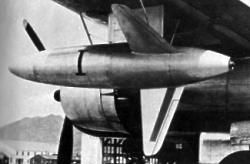
Home - Search - Browse - Alphabetic Index: 0- 1- 2- 3- 4- 5- 6- 7- 8- 9
A- B- C- D- E- F- G- H- I- J- K- L- M- N- O- P- Q- R- S- T- U- V- W- X- Y- Z
JB-3
 JB-3 |
AKA: Jianbing 3;Optical-1;Zi Yuan-2;ZY-2. Status: Operational 2000. First Launch: 2000-09-01. Last Launch: 2004-11-06. Number: 3 .
The sun-synchronous orbital bus developed for CBERS and the CBERS-3 imager may have been used for the military ZY-2 satellite, which was placed in a lower orbit for higher resolution imaging. The ZY-2 reportedly had over three times the resolution of the ZY-1.
Family: Earth, Surveillance. Country: China. Launch Vehicles: Chang Zheng 4B. Launch Sites: Taiyuan LC1.
2000 September 1 - . 03:25 GMT - . Launch Site: Taiyuan. Launch Complex: Taiyuan LC1. LV Family: CZ. Launch Vehicle: Chang Zheng 4B.
- ZY-2C - .
Payload: Zi Yuan 2. Mass: 2,600 kg (5,700 lb). Nation: China.
Agency: SISE.
Manufacturer: CAST.
Class: Surveillance.
Type: Military surveillance satellite. Spacecraft Bus: Jianbing.
Spacecraft: JB-3.
Decay Date: 2016-03-11 . USAF Sat Cat: 26481 . COSPAR: 2000-050A. Apogee: 501 km (311 mi). Perigee: 489 km (303 mi). Inclination: 97.40 deg. Period: 94.43 min.
The ZY-2 (Ziyuan-2 ('Resource-2'), while disguised as a civilian earth monitoring system, was actually code-named Jianbing-3 and was China's first high-resolution military imaging satellite. The cover story of the official Xinhua news agency was that the civilian remote sensing system would be used primarily in territorial surveying, city planning, crop yield assessment, disaster monitoring and space science experimentation. However the satellite was placed at a much lower altitude than the ZY-1 satellite and US intelligence sources indicated that it was a photo-reconnaissance satellite for exclusively military purposes, such as targeting missiles at US and Taiwanese forces. The new satellite was believed to employ digital-imaging technology and to have a resolution of 2 m or less. The satellite was designed and built by the Chinese Academy of Space Technology and was developed indigenously. It was said to be more advanced than earlier sensing satellites and was expected to have an orbital life of two years. The camera provided more than three times the resolution of the ZY-1 earth resources satellite. The Zi Yuan 2 satellite may have used the CBERS Sino-Brazilian bus of the earlier ZY-1. However it was also said to be of new design and demonstrated the capability to maneuver in orbit, adjusting its orbit after launch. In October 2000 Chinese scientists denied that the ZY-2 satellite had a military mission. It was said to be a remote-sensing satellite equipped with CCD cameras and an infrared multispectral scanner that could only identify objects on the ground with a resolution of several dozen meters to 1 km.
2002 October 27 - . 03:17 GMT - . Launch Site: Taiyuan. Launch Complex: Taiyuan LC1. LV Family: CZ. Launch Vehicle: Chang Zheng 4B.
- ZY-2B - .
Payload: Zi Yuan 2-2. Mass: 2,500 kg (5,500 lb). Nation: China.
Agency: CAST.
Class: Surveillance.
Type: Military surveillance satellite. Spacecraft Bus: Jianbing.
Spacecraft: JB-3.
Decay Date: 2015-01-22 . USAF Sat Cat: 27550 . COSPAR: 2002-049A. Apogee: 483 km (300 mi). Perigee: 470 km (290 mi). Inclination: 97.40 deg. Period: 94.10 min.
JB-3 2 was nominally a Chinese (PRC) remote sensing satellite, although US intelligence sources indicated it had primarily an intelligence imaging mission. JB-3 2 was the name adopted by the USSPACECOM. Most news reports from China and elsewhere use different names: ZY-2B (acronym for ZiYuan-2B, translated as Resource-2B), and Zhong Guo Zi Yuan Er Hao, translated as China Resource 2. No information was available on the instruments onboard the JB-3 2, but officially it was intended 'for territorial survey, environment monitoring and protection, urban planning, crop yield assessment, disaster monitoring, and space scientific experiments'. The initial orbital parameters of this sun-synchronous satellite were period 94.1 min, apogee 483 km, perigee 470 km, and inclination 97.4°.
2004 November 6 - . 03:10 GMT - . Launch Site: Taiyuan. Launch Complex: Taiyuan LC1. LV Family: CZ. Launch Vehicle: Chang Zheng 4B.
- ZY-2C - . Mass: 2,600 kg (5,700 lb). Nation: China. Agency: SISE. Class: Earth. Type: Earth resources satellite. Spacecraft Bus: Jianbing. Spacecraft: JB-3. USAF Sat Cat: 28470 . COSPAR: 2004-044A. Apogee: 504 km (313 mi). Perigee: 479 km (297 mi). Inclination: 97.30 deg. Period: 94.40 min. Zi Yuan 2-3 was a low earth orbit digital imaging spacecraft used by the Chinese government, probably for both civilian and military reconnaissance purposes..
Back to top of page
Home - Search - Browse - Alphabetic Index: 0- 1- 2- 3- 4- 5- 6- 7- 8- 9
A- B- C- D- E- F- G- H- I- J- K- L- M- N- O- P- Q- R- S- T- U- V- W- X- Y- Z
© 1997-2019 Mark Wade - Contact
© / Conditions for Use